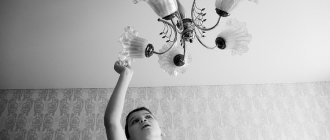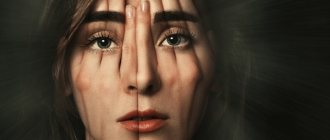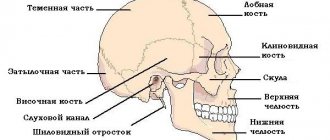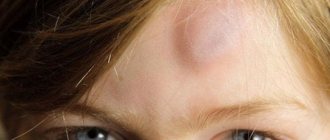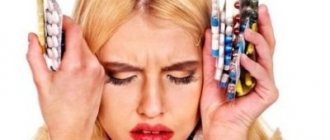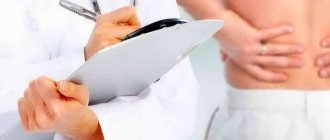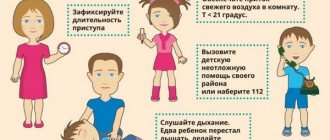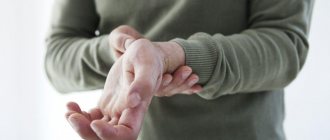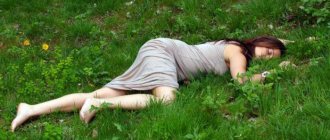Migraine symptoms
Essentially, headaches cannot be measured with instruments or tests. Also, migraine is perceived differently by each person. Headache episodes appear regularly with characteristic symptoms:
- pulsating;
- more often on one side;
- in the area of the eye, forehead, temple.
It may be accompanied by nausea, vomiting, intolerance to bright light and loud sounds. After the attack ends, drowsiness and lethargy may appear. Attacks with the same symptoms are repeated regularly.
During an attack, a person wants to hide from everyone in a dark room, without sharp sounds. He is unable to lead a normal life.
Who is susceptible to the disease?
A consolation for a person suffering from this disease can be the “company” in which he finds himself. It is known that many prominent personalities suffered from migraine attacks: Gaius Julius Caesar, Queen Mary Tudor, Blaise Pascal, Carl Linnaeus, Lewis Carroll, Thomas Jefferson, Friedrich Nietzsche, Emmanuel Kant, Edgar Allan Poe, Frederic Chopin, Karl Marx, Pyotr Tchaikovsky, Anton Chekhov, Sigmund Freud and many others.
This list is not surprising, since most people suffering from migraines are determined, ambitious, responsible and anxious. Some even believe that headaches in such people are a kind of payment for the success that contributes to them in life. However, this still does not mean that the presence of migraine attacks in a person is a sign of genius. The percentage of the disease among gifted and ordinary people is the same.
Attack phases
The migraine attack itself is divided into several phases, during which it develops and then subsides.
Prodromal phase. Characteristic signs are noticeable several hours before the attack. Sometimes this period increases and they appear in 2 days.
You may note irritability, excitability, sensitivity to light and sounds, irresistible food cravings, increased frequency of trips to the toilet, thirst, lethargy, feeling tired, blurred vision, yawning, drowsiness, slurred speech, impaired concentration, general weakness, lack of appetite.
Aura. Lasts from 5 to 60 minutes, characterized by visual, sensory, motor, and speech disorders.
Painful phase of the attack. This phase can occur after the aura or develop in parallel with it. The pain increases from mild, moderate to intense. Although it is unilateral, the side of the pain can change during one attack. Usually appears in the eye area, in the postorbital, frontotemporal zone. Initially, the pain is dull, gradually turns into throbbing, its intensity increases, and eventually becomes constant and severe. The painful part of a migraine attack can last from 4 to 72 hours.
The pain phase can occur after the aura or develop in parallel with it.
Postdromal phase. After the attack subsides, symptoms of weakness, drowsiness, low concentration, and depression may remain for up to 2 days.
The severity and duration of attacks can vary greatly from person to person, as well as from one person to another.
What to do first during an attack
Emergency help for migraines consists of premature relief of the pain syndrome, when it has not yet arisen, but the first symptoms are already present: a feeling of thirst, general malaise, increased irritability.
If such clinical manifestations occur, you can lie down in bed and try to take a nap. In most cases, migraines disappear during sleep. But those cases where neurological symptoms appear precisely when falling asleep are no exception.
If a migraine occurs in a place unsuitable for sleep, for example, on the street, in a store, at a party, you need to leave the stuffy room and go out into the fresh air. If possible, you can drink strong tea with lemon and sugar. It is the glucose contained in sugar that can fight migraine-like headaches.
Help for migraines can be as simple as using a heating pad on your forehead. Helps stop an attack and massage the cervical and head. This manipulation helps normalize blood circulation in these areas and restore normal oxygen exchange in the brain.
If you cannot prevent the headache, you can try taking a warm bath. As an alternative - a contrast shower. Often such water procedures help eliminate headaches and other unpleasant symptoms of migraine.
The room in which a person is located should not have bright or sunlight or loud sounds: it is necessary to close the curtains, windows and turn off sound-producing devices (TV, radio, etc.).
Quick help for migraines is to use a balm that contains menthol. Rub your temples with this product using your index fingers. This method of treating headaches is suitable even for women during pregnancy and while breastfeeding a child.
First aid may include a foot massage. A person needs to relax as much as possible and remove extraneous thoughts from his head. Compresses will be no less effective:
- from cabbage leaf or burdock;
- from lemon slices secured on top with a piece of bandage;
- from a towel soaked in warm water.
They will help eliminate headaches within 15-20 minutes. Of course, each body is individual and reacts differently to one or another remedy, including folk remedies. While compresses help some people get rid of migraine symptoms, for others they may not work.
If each of the above methods of emergency treatment for migraine is ineffective, you should not endure the pain, but urgently call a doctor. Upon arrival, he will provide the person with qualified medical care and prescribe further treatment for the disease.
Of course, when providing emergency care for migraine at home, the doctor will not be able to carry out the necessary diagnostic measures to identify the cause of the pathology. This is only possible when visiting a specialist located in a specialized institution (in a public or private clinic).
As soon as the opportunity arises, you need to go to the hospital to see a local therapist, who, if necessary, will refer the patient to a specialized specialist. The latter will prescribe instrumental (and laboratory) tests, the results of which can determine the source of the migraine, and prescribe appropriate therapy.
Psychological characteristics
There is an expression “migraine personality”, it says that there are a number of psychological traits characteristic of people with this problem: ambition, a tendency to demonstrative reactions, a desire from childhood for recognition from others, aggressiveness. They are pedantic, efficient, principled, and strictly follow generally accepted norms of behavior.
Since migraine attacks occur spontaneously and unpredictably, this creates a feeling of apprehension, anxiety, fear and disrupts the usual rhythm of life. These people are sensitive to stress, prone to anxiety-depressive reactions, and emotionally unstable. But thanks to their ambition and motivation, they set significant goals for themselves and usually successfully achieve them.
You can read how to deal with stress during migraines here.
Causes
Most often there is a genetic predisposition and it is transmitted through the maternal line. To do this, it is not necessary that your mother or grandmother suffers from migraines. It could even be a great aunt. But the presence of a genetic predisposition does not immediately lead to the disease; many provoking factors must coincide, which will transform the gene feature into an obvious problem. This means you can reduce your risk by avoiding the following factors:
- high intellectual load without rest;
- heavy physical overload;
- psychological “shake-up” (turbulent emotions, mental stress);
- long work at the computer;
- excessive/insufficient sleep.
Certain foods can provoke new attacks, each with their own (tomatoes, eggs, alcohol). In women, there is a connection between attacks and any hormonal fluctuations: menstruation, pregnancy, lactation, menopause.
Working at a computer for long periods of time can lead to the development of migraines.
Why does eye migraine occur?
Scientists still cannot answer this question unambiguously. The disease is associated with disorders that occur in the eye:
- Spasms in the arteries of the retina - the inner layer of the eye, which contains light-sensitive receptors - rods and cones.
- Pathological changes in the nerve cells of the retina.
In addition, there are some known risk factors that increase the likelihood of developing ocular migraines:
- The disease is more common in women.
- As a rule, attacks begin to occur after 40 years of age.
- Having close relatives who suffer from eye migraines increases the risk.
- Some diseases: atherosclerosis, systemic lupus erythematosus, depression, epilepsy, sickle cell anemia.
Ocular migraine is accompanied by unpleasant symptoms, but it is usually not dangerous. Complete loss of vision is possible, but this is very rare. However, similar symptoms occur in other, more dangerous pathologies that can lead to blindness. A neurologist will be able to establish the correct diagnosis, prescribe effective treatment, and tell you about your prognosis and possible risks.
How to treat migraine
Often, treatment for migraine at home consists of uncontrolled and indiscriminate use of medications to relieve an acute attack of headache. Taking the usual analgin, citramon, aspirin, paracetamol, diclofenac often does not help, and also interferes with an accurate diagnosis and the doctor prescribing the correct treatment. The choice of drug depends on the strength of the symptoms during the attack.
For more than 15 years, drugs from sumatriptan, a class of triptans, have been used:
- Sumamigren;
- Amigrenin;
- Imigran (nasal spray).
It is noted that this drug is more effective if the symptoms increase slowly during the attack. Drugs in this group are specially designed for the treatment of migraines, but they must be selected by a doctor taking into account the individual characteristics of the person.
Pain relief cannot be considered a complete treatment. If attacks occur more than once a month, preventive therapy is necessary.
Various groups of drugs are used to prevent attacks:
- antiepileptic drugs (sodium valproate, topiramate);
- β-blockers (propranolol, metoprolol);
- calcium channel blockers (flunarizine, verapamil);
- antidepressants (amitriptyline);
- riboflavin, magnesium preparations;
- combined non-steroidal drugs.
This treatment helps the body cope with the consequences of attacks - decreased blood flow, malnutrition, oxygen starvation of the brain and reduce inflammatory factors.
Before taking medications, be sure to consult your doctor.
Modern approaches to the treatment of migraine
Migraine is a common disorder, occurring in 6% of men and 18% of women (Rasmussen BK et al., 1991). Despite the fact that migraine therapy is well developed (according to the American Headache Association, the effectiveness of correct treatment can reach 95%), more than 70% of patients are not satisfied with the result of treatment (Lipton RB, Stewart WF, Simon D., 1998). This is partly the fault of the patients themselves, who do not see a doctor, self-medicate, and ignore the recommendations they receive. However, in many cases, the low effectiveness of therapy is the result of inadequate medical care. Some doctors continue to manage patients with migraine based on outdated information, without considering the possibilities of modern migraine treatments. However, the difficulty of treating headaches is not only due to the “correct” choice of medication. Migraine is a complex neurobiological disorder with a multifactorial pathogenesis, and the problem of its treatment cannot be solved with the help of any one drug, even a new and effective one. To achieve success, it is necessary to take into account a number of aspects, both purely medical and psychological.
In the treatment of migraine, three tasks can be distinguished - prevention of attacks, their treatment and prevention.
- Preventing migraine attacks . By teaching the patient to identify warning signs, identify migraine triggers, and avoid situations that provoke migraine, it is possible to prevent or significantly reduce the number of attacks without the use of drugs.
- Treatment of seizures . Many patients suffering from migraine are maladjusted by the fear associated with anticipating an attack. In this regard, it is very important to work together with the patient on treatment tactics for various scenarios of migraine development.
- Preventive treatment of migraine . If migraine attacks are frequent (more than 2 times a week) and/or if behavioral and pharmacological measures are ineffective, it is necessary to consider preventive treatment. Some specific forms of migraine are also indicated for preventive treatment: hemiplegic migraine or migraine with aura with persistent neurological deficit.
Preventing migraine attacks
The success of treatment largely depends on the doctor’s ability to teach the patient to recognize triggers and avoid situations that provoke migraines. According to our study, when first told, the connection between the onset of a headache and some factors is noted by about 30% of patients visiting a doctor (Danilov A. B., 2007). With careful questioning using a special questionnaire that lists all possible headache triggers, the frequency of identifying such factors increases to 85%.
The difficulty of detecting provoking factors may be explained by the fact that some of them never cause a migraine attack in some patients, while in others they do, but not always. For example, many patients sensitive to alcohol notice that if they are in a good mood, relaxed, and following a low-carb diet, then a moderate amount of white wine does not lead to negative consequences. If these patients are tense and eat a lot of sweets, then the same wine can cause them a severe migraine attack. When the presence of migraine triggers is not obvious, it is useful to use a headache diary, which helps to recognize the factors that provoke the development of migraines.
In a study conducted at our department, it was shown that in some patients a migraine attack did not occur at the height of emotional stress, but at the end of a stressful situation: after an important speech, after signing a complex contract, at the beginning of a vacation (“weekend migraine”), after receiving a promotion, etc. Chronic stress (family conflicts, work overload) contributed to an increase not only in the frequency of attacks, but also in the intensity of headaches. At the same time, the strength of the provoking factor depended on the significance that the patient attached to the events in accordance with his attitudes and coping strategies - the situation became/did not become “stressful” depending on the patient’s individual reaction to it. It was noted that men were more likely to attach importance to problems related to professional activities, and women were more concerned about their social relationships at work and at home (Danilov, 2007).
In susceptible individuals, foods may cause headaches. Most often, such triggers are meat (pork, game), as well as animal organs (liver, kidneys, goiter, brains), sausages and frankfurters, herring, caviar and smoked fish, vinegar, salted and pickled foods, some types of cheese (cheddar, "brie"), products containing yeast (especially fresh bread), chocolate, sugar and products containing it, citrus fruits (if consumed in large quantities), cream, yoghurt, sour cream, legumes, flavor enhancers such as monosodium glutamate, caffeine ( black tea, coffee), alcohol, especially red wine. It should also be taken into account that the development of a migraine attack can also be triggered by skipping meals.
Other migraine triggers are strong odors (even pleasant ones, such as perfumes, cigar smoke), vestibular stress, bright light, noise, and smoking. In women, in addition, the development of headaches can be triggered by certain days of the menstrual cycle or the start of taking oral contraceptives.
Physical activity can also be a migraine trigger. According to our study, 7% of women and 21% of men associate headaches with physical activity. Migraine attacks can be provoked by exhausting physical exercise (for women - fitness, dancing, for men - running, football, fitness). Playing sports without physical exhaustion does not lead to headaches (Danilov, 2007).
In 10% of cases, migraine attacks occur during sexual intercourse (Evans RW, 2001). The cause of headaches that develop during sexual activity may not be migraine, but secondary dangerous disorders - aortic aneurysm and others, so in this case it is advisable to undergo a thorough examination. Fortunately, secondary headaches are rare. However, sexual activity may also help reduce or even stop a migraine attack. In a study by Couch JR and Bearss C. (1990), which involved 82 women suffering from migraine, having sex at the onset of a migraine reduced the severity of headaches and other symptoms in every third patient, and in 12% of women, sex completely stopped the attack. The effect was more pronounced in those women who experienced orgasm. The authors explain the observed phenomenon by the influence of antinociceptive opiate systems, which are activated during sex and help reduce or stop headaches.
A number of migraine triggers, such as weather changes and certain days of the menstrual cycle, cannot be avoided. In these cases, it is important to simply be aware of the possible threat of migraine development and be prepared for the onset of an attack. Most other triggers can be controlled and should be disclosed to the patient. Thus, for many patients it may be an unexpected discovery that a migraine attack can be provoked not only by insufficient sleep and overwork, but also by excess sleep, a situation of recovery from a period of stress, overload.
Currently, many devices are offered to reduce or avoid the influence of migraine triggers, for example, special sunglasses, fluorescent lamps instead of “yellow” ones, earplugs, eye masks, and special pillows. It is also important to be able to relax. There are special techniques that help you relax and prevent the development of headaches in cases where you could not avoid a stressful situation.
Treatment of attacks
Behavioral interventions
Preparing for a possible attack. An important factor contributing to the success of treatment is achieving a sense of control over the headache: the pain can be exacerbated by the anxiety that grips the patient in anticipation of a new attack, and the feeling of helplessness that arises if the patient does not know how to cope with the attack. When the trigger or precipitating situation cannot be prevented, or when the patient fails to follow the doctor's instructions, it is important to teach the patient what to do if the development of a headache is unavoidable.
First of all, it is necessary to help the patient learn to recognize the onset of a migraine. Many patients (usually with many years of migraine experience) accurately distinguish migraine from other types of headaches. For others, the doctor’s explanations about the characteristics of migraine attacks (presence of precursors, aura, impaired concentration, nausea, etc.) will be very valuable. The education of the patient in this case is of direct importance in the choice of medications to relieve the attack. If a migraine of moderate or severe intensity is expected, then the best treatment in this situation will most likely be a drug from the triptan group. If the development of a mild headache is expected or the patient feels that in this case he is developing an episode of tension-type headache, then in this situation it is advisable to use a conventional analgesic or a drug from the group of non-steroidal anti-inflammatory drugs (NSAIDs).
It is important to select a drug in advance to relieve an attack, taking into account previous experience with the use of drugs (efficacy, presence of adverse reactions), the patient’s preferences and expectations, and the severity of the expected attack. The tactic of “waiting” is now recognized as incorrect. Migraine attacks can last up to 72 hours, and the longer it takes for migraine symptoms to appear, the worse the response to treatment. If you take the medicine as early as possible after the first signs of migraine appear, you can often completely prevent or significantly reduce the intensity and duration of the headache and quickly return to social or work activity.
Providing conditions for a comfortable experience of an attack . A number of behavioral interventions can enhance the effectiveness of medications. If a migraine attack begins, it is advisable to stop exposure to irritating stimuli (bright lights, loud speech, working at a computer monitor, activities requiring physical or mental stress). Understanding others is very important here. It makes sense for the patient to warn his family or colleagues and superiors in advance that he has migraine attacks, which can prevent him from working for 24 hours or more. They should be told that if the patient is given the opportunity to stop working, take medication and sit in silence, this will greatly increase the likelihood that after 2 hours he will be able to return to normal activities, successfully coping with the attack.
Drug therapy
To date, many methods have been developed for the treatment of migraines, ranging from tea from wild rosemary branches to triptan drugs. What is the best treatment? The best treatment will be one that is tailored to the individual needs of a particular patient.
Until recently, a stepwise approach was adopted in the treatment of migraine, according to which it was initially proposed to use simple analgesics or drugs from the NSAID group to relieve an attack. If the effect was insufficient, we switched to combination drugs. If the tried remedies turned out to be ineffective, it was proposed to use “upper step” drugs—triptans. Thus, triptans were used only in resistant cases.
This approach has often frustrated patients who would have preferred a doctor to immediately prescribe an effective drug. With a stepwise approach, the average patient tried about 6 drugs before finding the optimal one (Lipton RB, 2000). It should be taken into account that another failure when taking a new drug seriously undermines the patient’s faith in the possibility of success of therapy, increases anxiety, contributes to the development of depression and maladjustment, which worsens the prognosis of therapy.
The stratified approach to migraine treatment has proven to be extremely convenient for clinical use. It is based on assessing the impact of migraine on the patient’s daily activities using the MIDAS (Migraine Disability Assessment Scale). Depending on the answers to five simple questions about time lost due to headaches in three main areas of life (study and work, housework and family life, sports or social activity), the severity of migraine is determined. The MIDAS scale divides patients into 4 groups, where group I corresponds to minimal disruption of daily activities and mild headache intensity, and group IV is characterized by a severe degree of maladjustment and severe headache (Lipton RB, Stewart WF, 1998). Each group offers its own medications.
Treatment of attacks of mild intensity, which practically do not worsen the quality of life of patients. Patients in this group rarely go to the doctor, since they are helped by physical methods of dealing with pain (heat, cold), numerous “folk” methods (cabbage leaves, lemon peel, peeled, etc.). Of the pharmacological agents for rare attacks of unexpressed headache, simple analgesics (Analgin), paracetamol or drugs from the NSAID group are usually effective: ibuprofen (Ibuprofen, MIG 400, Nurofen), naproxen (Naproxen), indomethacin (Indomethacin), diclofenac (Voltaren ) etc. The choice of drug should be made depending on the patient’s preferences, taking into account past experience with drugs and the risk of gastrointestinal complications
Treatment of attacks of moderate intensity. For pain of moderate intensity, NSAIDs are indicated. More effective are combined analgesics containing codeine or caffeine (Caffetin, Solpadeine, Tetralgin, Pentalgin). These drugs can be purchased without a prescription. Many patients, unfortunately, get too carried away with them, believing that it is necessary to be careful only when using medications prescribed by a doctor. It should be remembered that over-the-counter medications, when used in excess, can lose their effectiveness and sometimes even cause an overuse headache, that is, a headache caused by excessive use of the drug.
In cases of severe maladjustment in patients with moderate headache intensity, it may be advisable to start therapy with a triptan drug. The use of triptans can reduce the number of drugs that patients take for the symptomatic treatment of migraine and prevent chronic headaches.
Treatment of high intensity attacks. If the headache intensity is high, it is recommended to immediately prescribe a drug from the triptan group. In some cases, it is advisable to use opioid analgesics. Clinical studies have demonstrated the high effectiveness of the combination drug Zaldiar, which includes the weak opioid analgesic tramadol and the analgesic and antiperetic paracetamol, for relieving migraine attacks. Thanks to this combination, it is possible to achieve high efficiency with a low number of side effects (Ekusheva E. V., Filatova E. G., 2007). Zaldiar does not belong to the group of narcotic analgesics, and any doctor can prescribe it on prescription form No. 147.
Severe headaches are often accompanied by severe nausea and vomiting. In this case, it is advisable to use antiemetics: metoclopramide (Metoclopramide, Cerucal, Ceruglan), domperidone (Domperidone, Motilak, Motilium), chlorpromazine (Chlorpromazine, Aminazine). Some experts recommend using an antiemetic 20 minutes before taking an NSAID or triptan drug. If the attack is accompanied by nausea, it is advisable to use a triptan nasal spray (Imigran) (.).
For very severe persistent migraine attacks, the use of corticosteroids (dexamethasone 8–12 mg intravenously or intramuscularly) is necessary.
Some studies have demonstrated a good effect (“on the needle” effect) of Cormagnesin for relieving migraines of moderate or severe intensity (Danilov A. B. et al., 2004). There are other medical methods for relieving migraines, for example, treatment with leeches, injections of novocaine into trigger points, etc. These methods are very effective in the hands of those specialists who have developed them or have extensive experience in their use. Unconventional approaches to the treatment of headaches can be welcomed if they are effective, but they cannot be recommended for mass use without evidence-based research.
Features of triptan drugs . The gold standard for migraine therapy is sumatriptan. The effectiveness and safety of sumatriptan was studied in 300,000 attacks (more than 60,000 patients) in clinical trials and in 200 million attacks in clinical practice over 15 years of its use. Patient satisfaction with this drug is 63% and significantly exceeds satisfaction with drugs of other classes that are used to relieve migraines (Pascual J., 2007). Sumatriptan is more effective in patients with slow onset headaches. In our country, sumatriptan is produced in the form of tablets under the trade names Amigrenin, Imigran, Sumamigren, in the form of a spray - “Imigran” and in the form of suppositories “Trimigren”. Studies of generic sumatriptan (Amigrenin, Sumamigren) conducted in our country confirmed its high effectiveness (Vein A.M., Artemenko A.R., 2002; Tabeeva G.R., Azimova Yu.E., 2007).
Naratriptan (Naramig), zolmitriptan (Zomig), eletriptan (Relpax) belong to the second generation of triptans and have greater selectivity of action compared to sumatriptan, which leads to fewer side effects and greater effectiveness in some respects. The use of these drugs is advisable when taking sumatriptan is ineffective.
The following recommendations have been developed for the use of drugs from the group of triptans to relieve a migraine attack. After the patient feels that he is developing a migraine attack of severe or moderate intensity, he should take 1 tablet of the drug (minimum dose). If the pain goes away after 2 hours, the patient can return to normal activities. If after 2 hours the pain has decreased, but has not gone away completely, it is recommended to take another dose (tablet) of the drug. Next time you can immediately take a double dose of the drug (2 tablets).
If there is no effect 2 hours after administration, the drug is considered ineffective. In this case, the question of replacing it should be raised. Some headache specialists suggest trying the drug 3 times before giving it up. Other doctors believe that a new drug should be used for the next attack. We adhere to the second point of view, i.e. if the drug was taken in a timely manner during a correctly recognized migraine attack and after 2 hours the intensity of the headache has not changed at all, then at the next attack you should take another drug (a triptan from a different group or from a different manufacturer). Note that there is marked variability in the effectiveness of the drug, including within the triptan series, depending on individual sensitivity. It is important to patiently select from the available arsenal the remedy that will be effective for a given patient.
Once an effective drug has been found, you should not experiment with others. Recommend that the patient always carry the medicine with him. There should be no fear of addiction if the drug is used no more than 2 times a week. Taking triptans more frequently can lead to side effects, including triptan overuse headache (headache caused by drug abuse). Also, do not exceed the maximum daily dose. There are contraindications to the use of triptans, such as the presence of hypertension and other cardiovascular disorders (for a complete list of contraindications, see the instructions for use). The choice of drug should be made jointly by the doctor and the patient, taking into account pharmacochemical characteristics, the presence of contraindications and individual sensitivity.
Preventive treatment of migraine
Prescribing preventive treatment is a responsible task that requires careful preliminary discussion with the patient. Preventative treatment is associated with side effects due to long-term use of medications and requires patience from the doctor and the patient. However, the lack of preventive treatment can lead to abuse of analgesics and the development of abusive headaches. Frequent migraine attacks are the basis for the occurrence of chronic migraine, as well as risk factors for vascular brain damage.
To prevent migraine, various pharmacological agents are used, including those for which the recommendations do not yet include this indication. Monotherapy is preferable; in complex cases, combination treatment is allowed, taking into account concomitant diseases. The drugs of choice are beta-blockers - propranolol (Anaprilin, Obzidan). Antidepressants and anticonvulsants, which occupy a leading position in the effectiveness of preventive treatment, still do not have this indication in the instructions for use. Of the anticonvulsants, the most effective are valproate and the new anticonvulsant topiramate. Clinical studies have shown that topiramate is effective in preventing migraine attacks, significantly reducing their frequency. Its effect develops quite quickly - during the first month of therapy there is a stable, long-term decrease in the number of attacks without the development of resistance. Compared to other anticonvulsants, topiramate has a favorable tolerability profile (Brandes JL, 2004).
Antidepressants have long been used to treat migraines. The basis for their use is the information accumulated in the treatment of chronic pain. Antidepressants reduce the accompanying symptoms of depression, which is either present in the patient initially or develops in connection with frequent migraine attacks. Antidepressants potentiate the effect of analgesics and triptans, and some of them have independent antinociceptive or analgesic activity. The most favorable efficacy/safety ratio is observed in the new generation of antidepressants - venlafaxine (Velafax, Velaxin), duloxetine (Cymbalta), milnacipran (Ixel).
Prospects for migraine treatment
Currently, a phase 2 study is underway in Europe of the CGRP receptor antagonist olcegepant, which, when administered intravenously, prevents intracranial vascular dilatation that occurs during a migraine attack. Research is also being conducted on the first tablet form of the CGRP receptor antagonist, MK-0974, to relieve migraine attacks (Doods H. et al., 2007).
A group of American scientists from the Ohio University Medical Center conducted a study on the use of transcranial magnetic stimulation to interrupt migraine attacks with aura. According to current theory, the development of migraine begins with an increase in electrical activity in the occipital lobe, after which the electrical impulse spreads throughout the brain, causing the symptoms of a migraine aura. The essence of the technique is to interrupt this electrical activity using an electromagnetic pulse. More than two-thirds of patients treated with transcranial magnetic stimulation reported either no or moderate pain two hours after the procedure. Less than half of the patients reported the same effect in the placebo group (Clarke BM et al., 2006).
Clinical trials of a new drug, an aerosol for migraines, are currently underway. To supply the active substance, the patented technology for the manufacture of Stokatto inhalers is used, which has a number of features. The device has a built-in battery, which, when pressed on the piston, heats up one dose of a solid medicinal substance, turning it into an aerosol. The aerosol particle size—1–3 micrometers—is optimal for deep irrigation of the lungs, where the drug is quickly absorbed and enters the circulatory system at a speed comparable to intravenous injections. The new drug, codenamed AZ-001, is the Staccato system of prochlorperazine, a drug used to treat symptoms such as nausea and vomiting. Recently, research results were released that showed that when administered intravenously, this substance is effective for migraines. Thus, if the clinical trials are successful, Staccato Prochlorperazine will have undeniable advantages over tablets and intravenous injections, since it will combine the effectiveness of an intravenous drug with convenience and ease of use, which will allow the use of the inhaler at home (Alexza news release, 2007).
Non-pharmacological aspects of migraine treatment
Despite the fact that advances in the field of pharmacology play a huge role in the treatment of migraine, the skill of the doctor is no less important, and first of all his ability to build a dialogue with the patient. Here are the factors that doctors consider most important when achieving success in treating migraines.
- Collaboration with the patient. Particularly important is the sincere attitude of the doctor towards the patient, which is manifested through non-verbal communication (intonation, facial expressions, gestures). The patient will immediately feel if the doctor tries to hide his irritation behind encouraging remarks due to the fact that the patient is taking up his time with his questions, when the diagnosis is clear and the patient has long been given a leaflet with prescriptions.
- Involving the patient in the treatment process. The essence of the problem, treatment options should be explained to the patient and he should be involved in the choice of therapeutic agents, taking into account past experience, preferences and expectations. The time spent explaining the essence of the problem pays off with high patient adherence to treatment and, as a result, higher rates of effectiveness of the therapy.
- Patient education and training. Many patients are frustrated by the fact that various doctors and numerous tests do not find a physical cause for their headaches. In this situation, it is advisable to spend time explaining the pathogenesis of migraine. In addition, it is important to educate the patient to identify triggers and avoid migraine-provoking situations.
- Assessment of migraine severity. The severity of migraine is determined not only by clinical manifestations, but also by how much the disease interferes with the patient's life.
Critically evaluate the patient's past experiences, attitudes and expectations. Often patients turn to the doctor who have already tried all known medications and have not received the desired effect. In these cases, it is important to carefully question the patient about previous experience with the medication in order to understand what may be causing the lack of effectiveness.
Conclusion
Thus, treating migraine is a complex, complex task that requires erudition, sensitivity to the patient, good communication skills and patience from the doctor. Currently, not only modern drugs have been developed, but also new approaches to treatment that allow its selection based on objective criteria. However, a doctor faced with the treatment of migraine cannot be a simple executor of the proposed algorithms. In order for therapy to be effective and safe, it is necessary to creatively approach the choice of methods, taking into account the individual characteristics of patients. Also very important is the creation of a trusting and at the same time business relationship with the patient, his education and active involvement in the treatment process. If the doctor manages to cope with all of the above tasks, treatment will not only relieve the symptoms of the disease, but also improve the patient’s quality of life by eliminating or mitigating his social and work maladjustment, that is, achieving exactly what the patient comes to the doctor for.
For questions about literature, please contact the editor
A. B. Danilov , Doctor of Medical Sciences, MMA named after. I. M. Sechenova , Moscow
